As we brace ourselves for cold temperatures and prepare to hunker down for the dark winter months, let’s look at our industrious companions: bees. Just like many of us, bees have their own ways of coping with the winter chill. Some return to their hive and engage in a communal cuddle to keep each other warm, while others fashion their own cozy cocoons for hibernation. Certain bees, with a noble sacrifice, do not survive the cold temperatures and instead allow their larvae to live on until the next spring. Let’s explore the top bees of the Pacific Northwest and a special guest from Southeast Asia.
Special Guest: Rocky Honey Bee
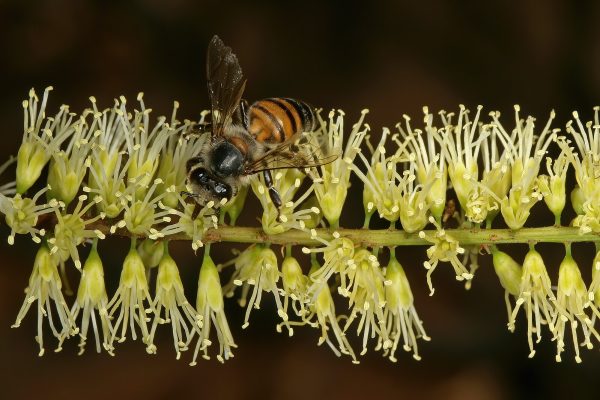
AND FINALLY, OUR SPECIAL GUEST COMING FROM SOUTHEAST ASIA, this wonderful bee doesn’t get a ranking because it is not even comparable to the measly PNW bees, coming in at a whopping 2 cm long. Size is not the only thing it boasts; aggression is its forte, thriving in colonies of up to 100. When provoked, these formidable bees chase their enemies long distances and sometimes sting them to death. Yet even these mighty bees aren’t invincible, falling prey to wasps, hornets, birds and bee-hunting mammals. Bee hunting is the practice of following a rocky honey bee back to its hive to locate honey colonies, these colonies are then opened and robbed of honey. Even in the face of adversity, their strength and resilience continue to awe and inspire.
#9: Cuckoo Bee
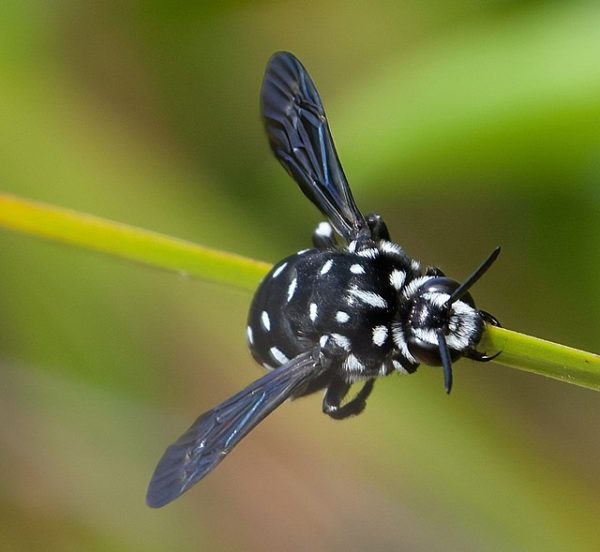
Well, well, well, if it isn’t the Cuckoo bees. Ranked in dead last, these bees are the real CEOS, by outsourcing labor. They get their name from the cuckoo bird, which leaves its egg in a host’s nest for the host to raise. These clever infiltrators trick whole colonies into raising their children.
#8: Carpenter Bee
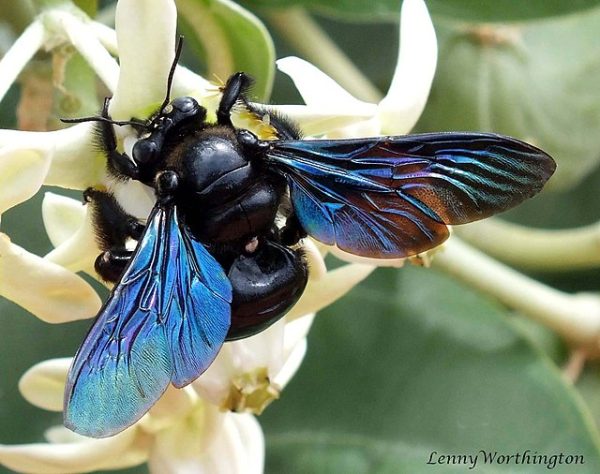
This dapper bee is unlike most with its unique bluish-green color that makes it look more like an ant or fly. However, their attire is only a facade that hides these blue-collar worker bees and is how they get their name: the carpenter bee. They bore holes into trees, timber and siding and are often punished for living out their biological duties due to the harm they cause to wood structures. Their looks don’t get them very far in the animal kingdom, as they have many predators including woodpeckers, shrikes, and ratels (honey badgers). They are amazing at pollinating eggplants and tomatoes among other veggies and flowers. Carpenter bees are often overlooked, but their industrious efforts deserve a nod. They might be small, but they make a big impact!
#7: Sweat Bee
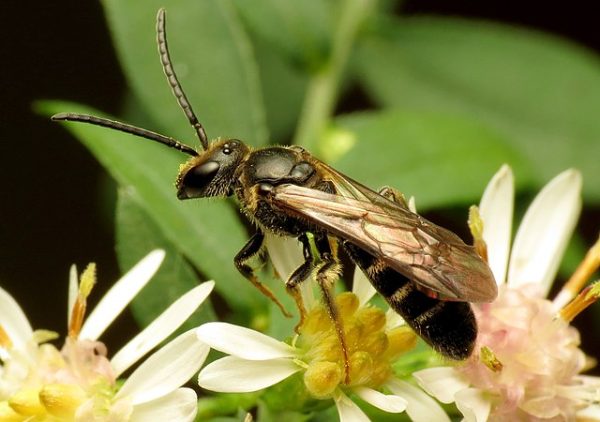
In a world where rankings attempt to quantify the extraordinary, the sweat bee, though perhaps not topping the charts, emerges as a hidden gem. A modest masterpiece that captivates with its subtle allure. These tiny wonders between three to 10 mm have a metallic elegance, and are attracted to human sweat, adding a touch of intimacy to their existence. Nestled in abandoned wood-boring beetle burrows, they craft resilient homes, embodying adaptability. Ranked at #7, their unassuming charm and unique lifestyle make them a standout in the intricate tapestry of nature’s wonders.
#6: Agapostemon Virescens
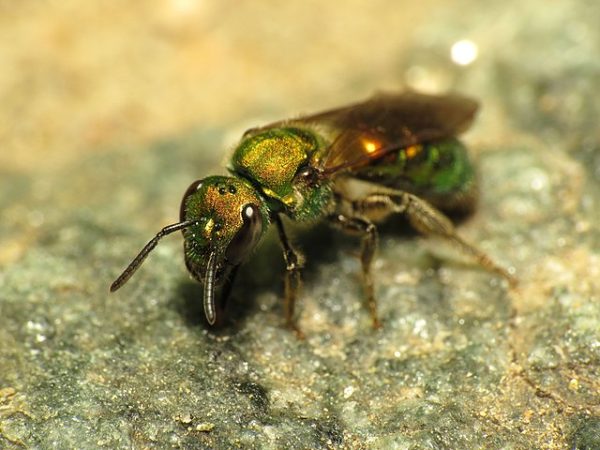
Agapostemon virescens, also known as the tricolored sweat bee, is a sibling to the amazing sweat bee, but with a twist. These green darlings outrank their counterparts because of their vibrant colors; not only do they do everything a normal sweat bee can do—pollinate, find human sweat, be tiny—but they do it all by looking good. These little fashionistas of the bee world prove that functionality and style can coexist in the buzzing realm of nature.
#5: Golden Northern Bumble Bee
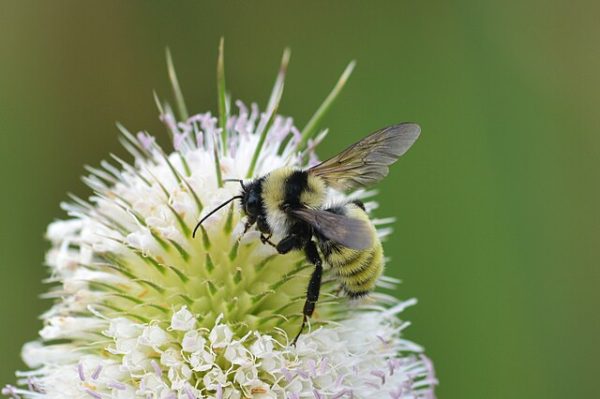
These cuddlesome, kissable, lemon-yellow bees are quite the eye-catcher. But don’t let their beauty fool you. Unlike other bees, the Golden Northern Bumble Bee doesn’t lose its stinger after one sting and can attack repeatedly. Even so, they tend to live in smaller packs, compared to honey bees and rarely swarm. Unfortunately, these fluffy little guys only live up to four weeks, and those who survive have to hibernate in the ground and hope they make it through the winter. Despite their short lives, the Golden Northern Bumble Bee leaves a lasting impression as a resilient and formidable pollinator in its brief time on the buzzing stage.
#4: Mining Bee
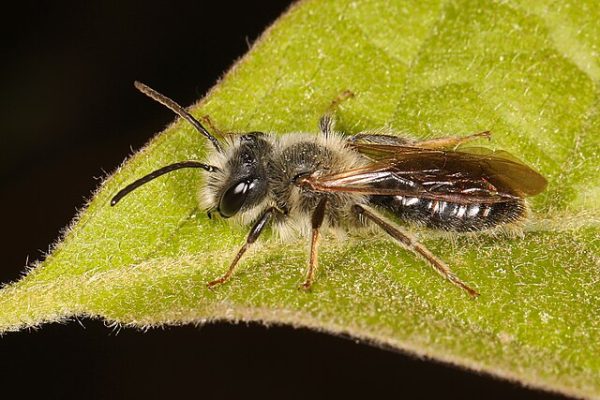
Yearning for the mines, these bees turn the ground for their homes. All bees in the genus Andrena, which includes 261 species, excavate holes in the earth for their nests. The bees dig down from a few inches all the way up to three feet! They take the loose dirt they excavate and mix it with water to create chimney-like turrets at the opening of their nest. When the wind starts to blow from the east, and the rain moves in, these bees fashion a tight cocoon where the new adults stay in a sleepy state of torpor. In the subterranean world they’ve meticulously crafted, these mining bees showcase their adaptability and resourcefulness, turning their underground abodes into havens of resilience and gets them their spot at #4.
#3: Honey Bee
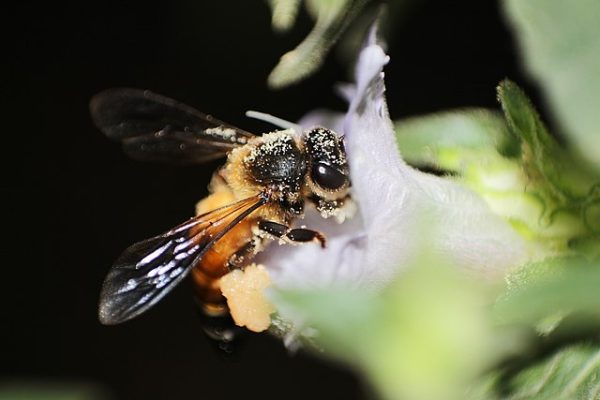
These are the most famous bees, and for good reason. With the classic bee look: the brown and dull yellow striped abdomens and dense hair covering the head, thorax and legs, these bees are truly one to look up to. They have an immense work ethic; just one pound of honey requires 2 million flower visits and a total of 55,000 miles of traveling. Although passionate, they don’t pull the first spot because of their inefficient pollination. Honey bees are more interested in nectar than pollen. In fact, on many farms honey bees are used as a substitute for the missing natural bees and only enhance the pollination of 14%. Thanks for trying, honey bees, and providing us with a delicious treat. But in the world of pollination, actions speak louder. For their sweet contributions and iconic appearance, they grab the respectable #3 spot in the bee hierarchy.
#2: Leaf Cutter Bee
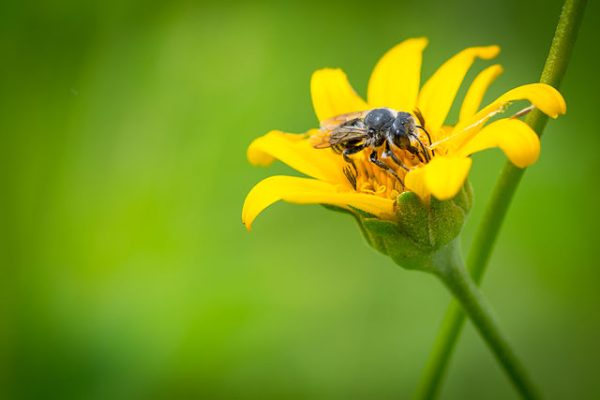
Move over, honey bees, there’s a new bee in town, and it’s the leafcutter bee claiming the prestigious second spot! These DIY enthusiasts are armed with sharp mandibles, with which they skillfully cut neat, uniform shapes from leaves, creating a bee utopia. They embrace a docile demeanor and sting only if handled, and when it comes to pollination, they’re the overachievers—just one leafcutter bee can out-pollinate up to 20 honeybees. But their work doesn’t continue year-round. As winter rolls in, these bees kick back and become dormant, mature larvae, ready to resume their creativity when the flowers bloom again. Leafcutter bees: the undisputed artists and pollination powerhouses, proving that being number two doesn’t mean you can’t cut it!
#1: Mason Bee
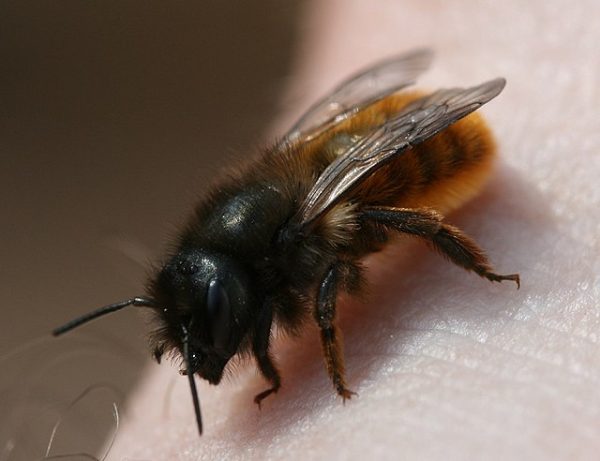
Mason bees are the undisputed rockstars of pollination. They’re truly the Beyoncé of bees. These tiny powerhouses are a staggering 120 times more effective at pollination than your run-of-the-mill honey bees or bumble bees. What makes them even more fascinating is that they don’t bother with hives. Every female bee is a queen, ruling over her own small domain. Mason bees are known for their manners, they’re incredibly gentle and rarely sting. Even when they do, it’s as mild as a mosquito bite. Mason bees truly prove they are the queens in this bee hierarchy.
